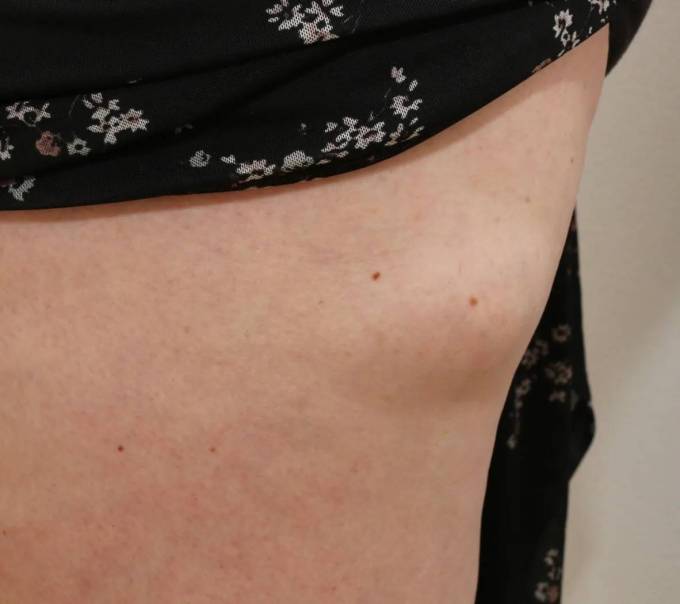Lipoma Treatment Options: Finding the Right Fit
Published By Bisma Jamal, 25 Sep 2024

Lipomas are benign tumors made up of fatty tissue that can develop under the skin. While they are generally harmless and often painless, many individuals seek treatment for aesthetic reasons or discomfort caused by larger lipomas. The good news is that there are several effective treatment options available for those looking to remove or manage lipomas. This article explores various Lipoma Treatment in Dubai options, helping you find the right fit for your situation.
Understanding Lipomas
What Are Lipomas?
Lipomas are soft, movable lumps that form when fat cells grow in clusters. They can vary in size and typically appear on the neck, shoulders, back, abdomen, arms, and thighs. While lipomas are usually harmless and do not require treatment, some people may experience discomfort or choose to remove them for cosmetic reasons.
Symptoms and Diagnosis
- Symptoms: Most lipomas are painless and cause no symptoms. However, larger lipomas can put pressure on nerves or surrounding tissues, leading to discomfort.
- Diagnosis: A healthcare provider typically diagnoses a lipoma through a physical examination. In some cases, imaging tests such as ultrasound or MRI may be used to confirm the diagnosis and assess the size and location of the lipoma.
Treatment Options for Lipomas
1. Surgical Excision
Surgical excision is the most common and effective treatment for lipomas, especially for larger ones or those causing discomfort.
Procedure:
- Local Anesthesia: The procedure is usually performed under local anesthesia to minimize discomfort.
- Incision: The surgeon makes a small incision over the lipoma and removes it along with the surrounding tissue.
- Closure: The incision is closed with stitches, and the area is bandaged.
Benefits:
- Complete Removal: Surgical excision offers the best chance for complete removal, reducing the likelihood of recurrence.
- Immediate Results: Patients can often see immediate results post-surgery.
Considerations:
- Scarring: Surgical excision may leave a scar, depending on the size of the lipoma and the surgical technique used.
- Recovery Time: Recovery is usually quick, with many patients resuming normal activities within a few days.
2. Liposuction
Liposuction is a less invasive option for treating lipomas, particularly for those who prefer to avoid traditional surgery.
Procedure:
- Local Anesthesia: Similar to excision, liposuction is performed under local anesthesia.
- Insertion of Cannula: A thin tube (cannula) is inserted through a small incision, and fat cells are suctioned out.
Benefits:
- Minimal Scarring: Liposuction leaves smaller scars compared to surgical excision.
- Less Recovery Time: Patients typically experience less downtime and discomfort.
Considerations:
- Incomplete Removal: Liposuction may not remove the entire lipoma, leading to a higher chance of recurrence compared to surgical excision.
- Best for Smaller Lipomas: Liposuction is most effective for smaller lipomas that are not deeply embedded.
3. Steroid Injections
Steroid injections can be used to shrink lipomas, although this treatment is less common and generally not as effective as surgical options.
Procedure:
- Injection: A corticosteroid medication is injected directly into the lipoma.
- Frequency: Multiple injections may be required over time.
Benefits:
- Non-Surgical: This option is less invasive and does not require surgery.
- Reduced Size: In some cases, the lipoma may shrink significantly after treatment.
Considerations:
- Limited Effectiveness: Steroid injections may not completely eliminate the lipoma, and results can vary from person to person.
- Potential Side Effects: Possible side effects include pain at the injection site and skin thinning.
4. Watchful Waiting
In many cases, especially when lipomas are small, asymptomatic, and not bothersome, a watchful waiting approach may be appropriate.
Considerations:
- No Immediate Action: If the lipoma does not cause discomfort or cosmetic concerns, monitoring it over time may be the best course of action.
- Regular Check-Ups: Regular follow-ups with a healthcare provider can help monitor any changes in the lipoma’s size or symptoms.
Factors to Consider When Choosing a Treatment Option
1. Size and Location of the Lipoma
The size and location of the lipoma can significantly influence the choice of treatment. Larger lipomas or those in sensitive areas may require surgical excision, while smaller lipomas might be treated with liposuction or monitored.
2. Symptoms
If a lipoma causes discomfort or pressure on surrounding tissues, a more aggressive treatment option may be necessary. Conversely, asymptomatic lipomas may not require immediate treatment.
3. Cosmetic Concerns
For individuals concerned about the appearance of lipomas, surgical excision or liposuction may be the preferred option, as they can provide immediate cosmetic improvement.
4. Recovery Time
Consideration of the recovery time associated with each treatment option is crucial. Surgical excision typically requires a longer recovery period compared to liposuction or steroid injections.
5. Personal Preference
Ultimately, the choice of treatment should align with personal preferences and values. Discussing options with a healthcare provider can help clarify the best course of action for individual circumstances.
Consulting with a Healthcare Provider
Before deciding on a treatment option, it is essential to consult with a healthcare provider who specializes in lipoma management. A provider can help assess the lipoma's characteristics, discuss the pros and cons of each treatment option, and create a personalized treatment plan tailored to your needs.
Conclusion
Lipoma treatment options vary widely, and finding the right fit depends on individual circumstances, preferences, and the specific characteristics of the lipoma. Whether you opt for surgical excision, liposuction, steroid injections, or a watchful waiting approach, the goal is to achieve the best possible outcome while considering overall health and well-being. Always consult with a qualified healthcare provider to explore the most appropriate treatment options for your situation and to ensure a comprehensive understanding of the benefits and risks involved.
